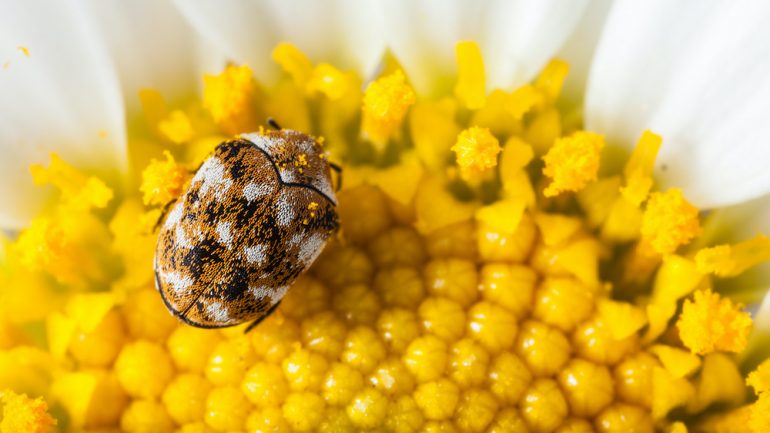As if you didn’t have enough household pests to deal with, along comes a creepy-crawly that eats your carpet and other fabrics. Carpet beetles are just as unwanted as roaches, spiders and ants. Here’s what you need to know about these bugs.
What to look for
You are more likely to suspect carpet beetles by the damage you find than by spotting the creatures themselves. It’s the carpet beetle larvae that pose a problem, not the adults. The larvae feed on the fibers of rugs, cloth upholstery, bed linens and even clothes. Once they mature into adult beetles, their preferred diet switches to plant life, flower nectar and scavenging dead insects, and they migrate outside.
Unlike moths, which will eat numerous holes in fabrics, carpet beetle larvae will start munching in one location and stay there, chewing away a single large area.
Because carpet beetles and their larvae are very small, you may spot the damage they cause before you see one. All carpet beetles have bullet-shaped bodies and are about an eighth-of-an-inch long. The three species have different looks. Adult black carpet beetles are solid black with brown legs and antennae. Varied carpet beetles have white, brown and yellow spots. The common carpet beetle is black with wavy white stripes running side to side. Carpet beetle larvae, the ones that do the damage to fabrics, are slightly larger than adult beetles and covered with bristly hair.
Carpet beetles sometimes are confused with bed bugs, but unlike bed bugs, carpet beetles are not parasites that bite for blood. If you see carpet beetles or their larvae in your bed, they are most likely feasting on your dead skin cells. They won’t bite you, but the bristles on the larvae might irritate your skin if you come in contact.
Like most insects, female carpet beetles hatch a small army of 25 to 100 babies. By the time you find damage to carpet or fabrics in your home, you probably have a serious infestation.
How do carpet beetles get in?
The adults would rather dine outside your home, but because the babies eat fabrics, females lay their eggs inside homes. They will migrate inside through small openings around windows and doors or down chimneys. They can also hitchhike on clothing as you walk from outdoors to inside, or come in on infested items.
Prevention and elimination
Your best practice for preventing carpet beetles is cleanliness. Sweep your interior frequently to prevent accumulation of dust balls. Vacuum carpets regularly. Check window and door caulking and weather stripping and replace as needed to close gaps. Maintain regular pest control to prevent and eliminate infestations.
Related – Understanding Pest Control Contracts


